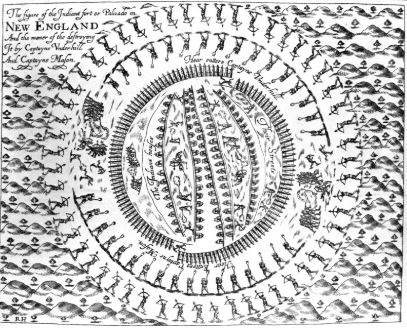Invasion from All Directions—Stolen Lands, Stolen Peoples 1600-1699
1636-1637
Pequot War and Pequot enslavement

As Puritan colonists expand beyond territorial boundaries, tensions mount between tribes and Puritan settlements. Governor John Winthrop declares that since the “Indians had not subdued the land” then all uncultivated land are public domain according to English Common Law and thus ripe for the taking. Puritans biblically defend the forced taking of land from tribes, and even murder, with Psalm 2:8: “Ask of me and I shall give thee the heather for thine inheritance and the uttermost parts of the earth for thy possession” (Oxendine, 2019). Miles Standish beheads Native leader Wituwamat and displays the head on a wooded post in the Plymouth Town Square (Oxendine, 2019). Native communities resist such attacks and loss of land. Thus, the Pequot War refers to a series of armed conflicts between colonists of the Massachusetts Bay, Plymouth, and Saybrook colonies and their allies, the Narragansett and Mohegan tribes, against the Pequot. During this period, Puritans “embarked on an unprovoked war of annihilation against the Pequot” (Hixson, 2013), which eventually leads to the decimation and enslavement of Pequot by Puritan colonizers almost immediately after the founding of Connecticut as a colony. Most enslaved Pequot are noncombatant women and children, with court records indicating that most serve as chattel slaves for life (Hixson, 2013). Women and children over 14 are sold into slavery while the rest are murdered. Boats loaded with as many as 500 slaves regularly leave the ports of New England filled with Pequots. Bounties are paid for Indian scalps to encourage as many deaths as possible.